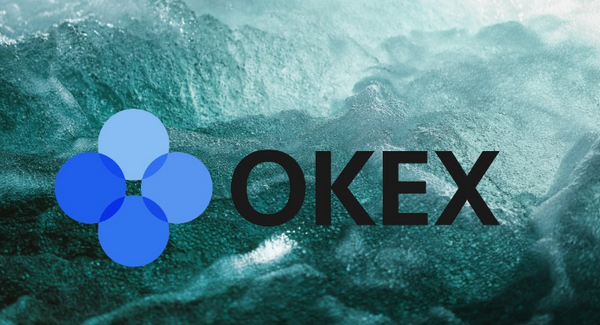-
 Bitcoin
Bitcoin $107,443.3008
-1.17% -
 Ethereum
Ethereum $2,494.2503
-0.63% -
 Tether USDt
Tether USDt $1.0003
0.00% -
 XRP
XRP $2.2496
2.23% -
 BNB
BNB $658.7569
0.63% -
 Solana
Solana $154.9826
1.94% -
 USDC
USDC $1.0000
0.01% -
 TRON
TRON $0.2799
1.07% -
 Dogecoin
Dogecoin $0.1659
-1.78% -
 Cardano
Cardano $0.5745
0.25% -
 Hyperliquid
Hyperliquid $39.7005
0.13% -
 Bitcoin Cash
Bitcoin Cash $519.5989
3.78% -
 Sui
Sui $2.7874
-2.40% -
 Chainlink
Chainlink $13.3762
-1.69% -
 UNUS SED LEO
UNUS SED LEO $9.0784
-0.64% -
 Avalanche
Avalanche $17.9846
-2.81% -
 Stellar
Stellar $0.2390
-0.06% -
 Toncoin
Toncoin $2.9028
0.25% -
 Shiba Inu
Shiba Inu $0.0...01147
-2.17% -
 Litecoin
Litecoin $86.6956
-1.27% -
 Hedera
Hedera $0.1508
-0.50% -
 Monero
Monero $322.6222
3.26% -
 Polkadot
Polkadot $3.4124
-2.99% -
 Dai
Dai $0.9999
0.00% -
 Bitget Token
Bitget Token $4.5434
-1.97% -
 Ethena USDe
Ethena USDe $1.0002
0.00% -
 Uniswap
Uniswap $7.1562
-2.61% -
 Aave
Aave $275.8830
-1.02% -
 Pepe
Pepe $0.0...09790
-4.04% -
 Pi
Pi $0.5018
-5.09%
Differences between OKX options and contracts
OKX offers distinct derivatives instruments, with options granting non-obligatory trading rights while contracts obligate traders to fulfill futures commitments.
Nov 21, 2024 at 01:23 am

Differences Between OKX Options and Contracts
In the burgeoning field of blockchain technology, OKX stands as a leading cryptocurrency exchange offering a comprehensive suite of trading instruments to cater to the diverse needs of traders. Among these instruments are options and contracts, two distinct derivatives that offer unique advantages and characteristics. This article delves into the intricacies of both options and contracts, highlighting their fundamental differences to guide traders in making informed decisions.
Options vs. Contracts: A Comparative Overview
- Nature of the Contract: Options are derivative contracts that grant the buyer the right, but not the obligation, to buy or sell an underlying asset at a predetermined price on or before a specified date. In contrast, contracts, also known as futures, obligate the buyer to purchase or the seller to deliver a given quantity of an asset on a future date at a predetermined price.
- Exercise and Expiration: With options, the buyer has the flexibility to exercise the right to buy or sell the underlying asset at any time before the expiration date. Upon expiration, the buyer may choose to let the option expire worthless or exercise it, resulting in the purchase or sale of the underlying asset at the strike price. Contracts, on the other hand, do not provide the same flexibility; once entered into, the buyer and seller are obligated to fulfill the contract's terms on the specified settlement date.
- Premium and Margin: Options involve the payment of a premium, a non-refundable fee paid by the buyer to the seller in exchange for the option's rights. The premium reflects the market's assessment of the likelihood of the option being exercised profitably. Contracts, conversely, require traders to post margin, a deposit that serves as collateral to cover potential losses. The margin amount typically represents a percentage of the contract's value.
- Profit Potential and Risk: Options offer potentially unlimited profit potential, as the buyer can profit significantly if the underlying asset's price moves favorably. However, the buyer's loss is limited to the premium paid. Contracts, on the other hand, provide a more balanced risk-reward profile; while profits can be substantial, so too can losses if the underlying asset's price moves against the trader's position.
- Liquidity: OKX offers a highly liquid options market, with a vast number of buyers and sellers actively trading these instruments. This liquidity allows traders to enter and exit positions with ease, minimizing slippage and ensuring fair pricing. Contracts also benefit from high liquidity, particularly for popular underlying assets, facilitating seamless trade execution.
- Use Cases: Options are commonly used for hedging strategies, speculation, and income generation through premium collection. They provide traders with flexibility and risk management tools to navigate market volatility. Contracts are primarily employed for hedging against price fluctuations and locking in future prices for commodities, currencies, and other assets.
- Trading Fees: OKX charges trading fees for both options and contracts. The fee structure varies depending on the specific instrument and market conditions. Traders are advised to carefully review the fee schedule before entering into any trades to optimize their trading costs.
- Account Requirements: To trade options on OKX, traders must meet certain account requirements, including undergoing an options trading qualification process. This process aims to ensure that traders have a thorough understanding of options trading strategies and risk management concepts. Contracts trading does not have specific account requirements beyond those for general trading on the OKX platform.
Disclaimer:info@kdj.com
The information provided is not trading advice. kdj.com does not assume any responsibility for any investments made based on the information provided in this article. Cryptocurrencies are highly volatile and it is highly recommended that you invest with caution after thorough research!
If you believe that the content used on this website infringes your copyright, please contact us immediately (info@kdj.com) and we will delete it promptly.
- Circle, Stablecoins, and National Banks: A New Era for Digital Finance?
- 2025-07-01 09:10:12
- Stablecoin Showdown: USD1 vs. USDC and the Regulatory Rumble
- 2025-07-01 09:10:12
- XRP, Wall Street, and the Bitcoin Model: A New Era for Institutional Crypto?
- 2025-07-01 09:30:12
- Grayscale, ETFs, and the SEC: A Crypto Game Changer?
- 2025-07-01 09:30:12
- S&P 500, Bitcoin, and Record Highs: A New Era of Corporate Crypto Adoption?
- 2025-07-01 09:50:13
- SOL Price, ETF News, Rally Sustainability: Decoding Solana's Next Move
- 2025-07-01 09:35:12
Related knowledge

How to use the price slope to filter the false breakthrough signal of the contract?
Jun 20,2025 at 06:56pm
Understanding the Concept of Price Slope in Contract TradingIn contract trading, especially within cryptocurrency derivatives markets, price slope refers to the rate at which the price changes over a specific time period. It helps traders assess the strength and sustainability of a trend. A steep slope may indicate strong momentum, while a shallow slope...

How to determine the expected volatility of the contract through the volatility cone?
Jun 19,2025 at 12:28pm
Understanding the Basics of Volatility in Cryptocurrency ContractsIn the realm of cryptocurrency trading, volatility is a key metric that traders use to assess potential risk and reward. When dealing with futures contracts, understanding how volatile an asset might become over time is crucial for position sizing, risk management, and strategy developmen...

How to formulate a contract intraday trading plan in combination with the pivot point system?
Jun 21,2025 at 03:42pm
Understanding the Basics of Pivot Points in Cryptocurrency TradingPivot points are technical analysis tools used by traders to identify potential support and resistance levels. These levels are calculated using the previous day's high, low, and closing prices. In the context of cryptocurrency trading, where markets operate 24/7, pivot points help trader...

How to adjust the contract position ratio through the price fluctuation entropy?
Jun 22,2025 at 11:42am
Understanding Price Fluctuation Entropy in Cryptocurrency ContractsIn the world of cryptocurrency futures trading, price fluctuation entropy is a relatively new concept used to measure market volatility and uncertainty. It derives from information theory, where entropy refers to the degree of randomness or unpredictability in a system. In crypto contrac...

How to use the volume swing indicator to predict the contract volume-price divergence?
Jun 18,2025 at 11:42pm
Understanding the Volume Swing IndicatorThe volume swing indicator is a technical analysis tool used primarily in cryptocurrency trading to evaluate changes in volume over time. Unlike price-based indicators, this metric focuses solely on trading volume, which can provide early signals about potential market reversals or continuations. The key idea behi...

How to use the Gaussian channel to set the contract trend tracking stop loss?
Jun 18,2025 at 09:21pm
Understanding the Gaussian Channel in Cryptocurrency TradingThe Gaussian channel is a technical indicator used primarily in financial markets, including cryptocurrency trading, to identify trends and potential reversal points. It is based on statistical principles derived from the normal distribution, commonly known as the Gaussian distribution or bell ...

How to use the price slope to filter the false breakthrough signal of the contract?
Jun 20,2025 at 06:56pm
Understanding the Concept of Price Slope in Contract TradingIn contract trading, especially within cryptocurrency derivatives markets, price slope refers to the rate at which the price changes over a specific time period. It helps traders assess the strength and sustainability of a trend. A steep slope may indicate strong momentum, while a shallow slope...

How to determine the expected volatility of the contract through the volatility cone?
Jun 19,2025 at 12:28pm
Understanding the Basics of Volatility in Cryptocurrency ContractsIn the realm of cryptocurrency trading, volatility is a key metric that traders use to assess potential risk and reward. When dealing with futures contracts, understanding how volatile an asset might become over time is crucial for position sizing, risk management, and strategy developmen...

How to formulate a contract intraday trading plan in combination with the pivot point system?
Jun 21,2025 at 03:42pm
Understanding the Basics of Pivot Points in Cryptocurrency TradingPivot points are technical analysis tools used by traders to identify potential support and resistance levels. These levels are calculated using the previous day's high, low, and closing prices. In the context of cryptocurrency trading, where markets operate 24/7, pivot points help trader...

How to adjust the contract position ratio through the price fluctuation entropy?
Jun 22,2025 at 11:42am
Understanding Price Fluctuation Entropy in Cryptocurrency ContractsIn the world of cryptocurrency futures trading, price fluctuation entropy is a relatively new concept used to measure market volatility and uncertainty. It derives from information theory, where entropy refers to the degree of randomness or unpredictability in a system. In crypto contrac...

How to use the volume swing indicator to predict the contract volume-price divergence?
Jun 18,2025 at 11:42pm
Understanding the Volume Swing IndicatorThe volume swing indicator is a technical analysis tool used primarily in cryptocurrency trading to evaluate changes in volume over time. Unlike price-based indicators, this metric focuses solely on trading volume, which can provide early signals about potential market reversals or continuations. The key idea behi...

How to use the Gaussian channel to set the contract trend tracking stop loss?
Jun 18,2025 at 09:21pm
Understanding the Gaussian Channel in Cryptocurrency TradingThe Gaussian channel is a technical indicator used primarily in financial markets, including cryptocurrency trading, to identify trends and potential reversal points. It is based on statistical principles derived from the normal distribution, commonly known as the Gaussian distribution or bell ...
See all articles

























































































